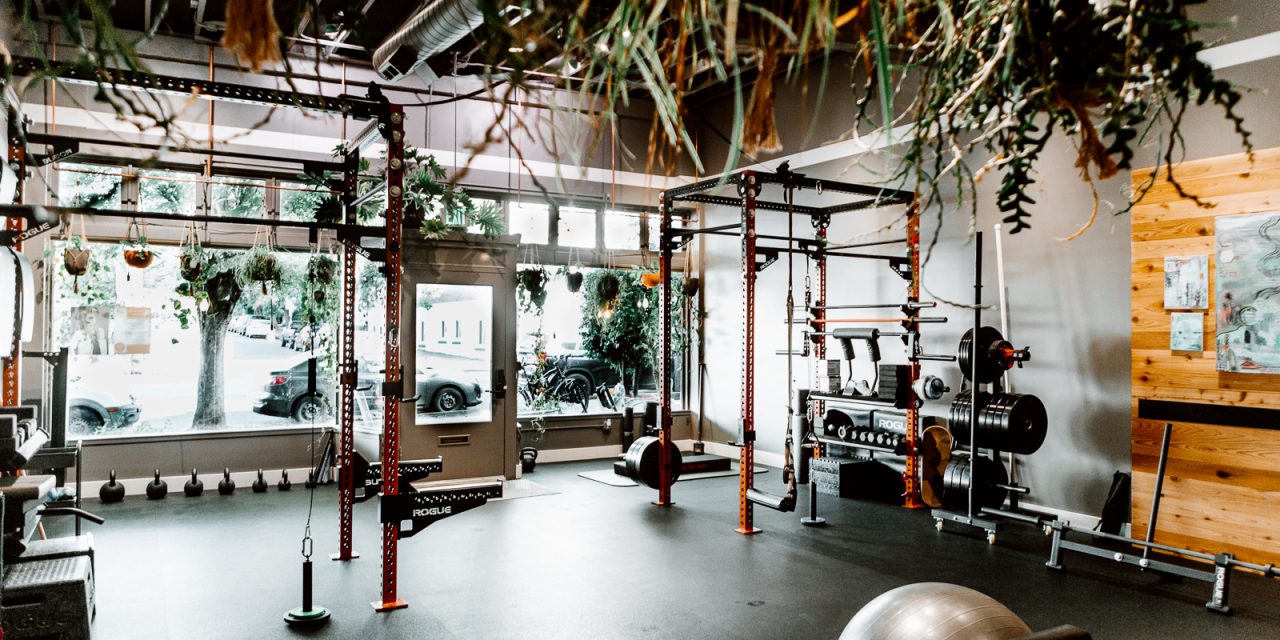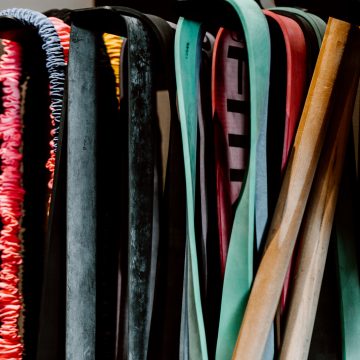[vc_row][vc_column][vc_column_text]The Gist:
- Training your grip is important and you should do it as much as possible
- Challenging your grip almost guarantees safety as it automatically limits what your body can do as a functional unit
- The point of exercise is to do things that are purposefully more difficult. Stop making exercise easier.
- The standard olympic barbell is a SPECIALTY piece of equipment. If you are not using to do olympic lifts (Clean, Clean and Jerk, Snatch), don’t use it.
[/vc_column_text][/vc_column][/vc_row][vc_row][vc_column width=”2/3″][vc_column_text]Recently a colleague asked Facebook about how he should go about fixing his grip during deadlifts.
Okay, deadlift question.
I use double overhand but my grip always fails on the 2nd of heavy doubles. The bar just rolls a little and I just let it go.
I’ve been thinking, straps? Or alternating my grip. I’m leaning toward straps. Thoughts?
This immediately invoked an entirely unwarranted and lengthy response from me that I feel could be shared with great benefit. The verbatim response is below:
I am going to go way against the grain here and also go on a little bit of a rant. Old time strongmen (and current strongmen) often always trained on thick grip bars. Their ultimate goal being to pick up the heaviest thing they can from the ground with one hand, hence the evolution of the bent press. They also often preached the importance of training your grip and “holding with intent” as Sandow put it. The olympic bar came later as a piece of SPECIALTY equipment for a specific set of movements. Over time this specialty equipment has become the standard with many people using olympic bars for non-olympic lifts. Why do you need a rotating bushing to do curls in the squat rack?
The larger question here really should be what can you do to SAFELY make you stronger, without injury, in the long game. I am going to assume that you are not training for a powerlifting meet so I will also assume that you just want to pick up heavy stuff and put it down and feel good. So, with that said, training on an olympic bar for deadlifts as a form of strength training makes little sense. If you are trying to improve your snatch, this makes more sense, but I would still defer to my below recommendations.
I believe that training with a thick grip forces two things:
1 – Its forces you to have complete integrity through the whole system to complete the lift
2 – Forces you to never lift more weight than you are able to, and therefore protects you.
Thick grip training acts like a circuit breaker for you body, tripping the fuse when the circuit is overloaded. Training with over/under, hook grip, or straps subverts these benefits. Training on a olympic bar also artificially overloads the deep flexors while neglecting the extensors of the wrist, muscles that are crucial for a strong grip and elbow health/balance. Training with a thick grip forces appropriate shoulder stability and will highlight whatever your weakness is and force you to train that weakness until it is no longer a weakness. So I would recommend the exact opposite of everyone. Decrease your weight and start using a fat bar or fat gripz or just a rolled up towel for each hand. You could also put lotion or something on your hands to make the grip even weaker, which I did when first learning kettle bells. It cleaned many things up trying to squeeze as hard as I could so the bell would not literally fly out of my hand.
To speak to Drew’s point, training with a loading pin will also force your grip and many of the above benefits. This is by far the easiest thing I have found to teach people how to deadlift. Its incredible how it automatically sorts out most problems, even for people who don’t have basic hinging.
Finally, I kind of look funny at some of the paths that people take when training. Isn’t the point of working out to do something that is harder than your normal life so that normal life is easier? With that, things like belts, lifting straps, chalk, weightlifting shoes, compression gear, or even air conditioning don’t make much sense for most people. I fully understand, however, that this thought is not applicable to those training for competition. Outside of those parameters though, it makes more sense to me to do the thing that is harder, not easier. Thats the whole point of working out, to do something hard. I think this also applies to a larger scope for most of life, the harder route is usually the right one.
Please feel free to tear apart my ideas, but I hope that has created some valuable thoughts and a sharply different perspective.”[/vc_column_text][/vc_column][vc_column width=”1/3″][vc_single_image image=”1975″ img_size=”full” add_caption=”yes”][vc_single_image image=”1977″ img_size=”full” lazy_loading=”true”][vc_single_image image=”1976″ img_size=”full” lazy_loading=”true”][/vc_column][/vc_row][vc_row][vc_column][vc_separator color=”custom” css_animation=”zoomIn” accent_color=”#f57e20″][/vc_column][/vc_row][vc_row][vc_column][vc_column_text]For the reasons above we only use a fat bar in our clinic. At some point I am sure we will own an olympic barbell, but it will be for specialty use only. All patients will learn to deadlift using a fat bar because it is the safest way that we can train people to do a basic life task, to safely pick up heavy things and then put them down. As clinicians we have zero worry that our patients will ever hurt themselves by deadlifting more than they can handle. We have zero worry because your body will not allow you to pick up something too heavy when your grip is challenged. The grip acts as a circuit breaker, shutting things down when a piece of the system is overloaded to protect the whole unit.
The amazing thing about using a thicker grip is it also fixes pushing movements (pushups, bench press) as much as pulling movements (deadlifts, pull-ups). With pulling movements the benefit is obvious because gravity will pull the weight out of your hands. But in pushing movements the weight is resting through the body. How does a thick grip help then? It’s mostly due to balanced recruitment and irradiation. First, balanced recruitment means that when the hand has something to crush it needs to engage both the extensors AND the flexors of the forearm creating and entire unit of contraction. This creates a cascade of recruitment because the forearm connects to the arm that connects to the scapula that connects to the back. So because the most distal piece is under tension, then proximal pieces must also contract. This is essentially what irradiation is. A distal recruitment of muscle fibers creating increased contracting of surrounding muscles. Irradiation and balanced contraction can’t happen when the body has something tiny to grab. The body needs something big enough to squeeze against. Try this experiment, squeeze the normal grip place of a standard barbell as hard as you can. Then go the the end of the barbell and squeeze where you put the plates on. Which were you able to squeeze harder? Likely the thicker end of the barbell.
So stop making all of this harder than it needs to be. Train your grip and everything will be fine.[/vc_column_text][/vc_column][/vc_row]




